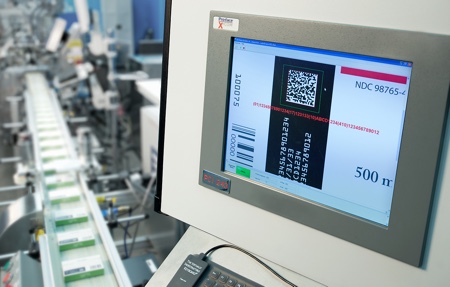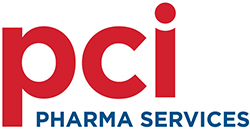For professionals in the healthcare industry, the ultimate mission is to provide life-saving medicines to patients around the world. Critical to that mission is patient safety. Patients around the globe trust that their medicines are both safe and effective. The industry’s unwavering commitment is to ensure that their trust is well placed.
The healthcare industry has often been ‘reactionary’ when it comes to improvements in packaging to ensure patient safety. The most widely known instance of this was in 1982 with deaths relating to adulterated acetaminophen in the United States. The swift industry response is well documented and has become a business school study standard. As a result, tamper-evident features in packaging are now the standard and the typical consumer would be concerned to find them lacking. Common package labelling instructs the patient to look for these features and clearly states to avoid the medication if the features are not present or appear to have been tampered with.
Less well known to the general public is that industry change as a response to a patient safety concern also came about recently when wood pallets were identified as the cause of several product recalls of common over-the-counter medicines. Reported by the US Food and Drug Administration in 2010, a commonly used pesticide (2, 4, 6-Tribromoanisole, or TBA) was found to have migrated into drug packaging and contaminated the product. As an industry response, the use of chemical treatments for preserving wood pallets was effectively forbidden and the industry moved to heat treatments only. This change was implemented very rapidly.

Justin Schroeder, Executive Director Marketing, Business Development and Design, PCI Pharma Services
In 2005, a book titled Dangerous Doses brought to light the growing problem of adulterated medicines entering the legitimate pharmaceutical supply chain. The investigational book called attention to numerous deaths relating to medicines that passed through the ‘grey market’, with examples of medicines that were diluted, kept in inadequate conditions, falsified or counterfeit, or completely misrepresented. As a result, pharmaceutical wholesalers that supply pharmacies and hospitals were forced to change their supply chain practices and significantly strengthen safeguards to provide visibility throughout their supply networks. Pharmaceutical companies stepped up their own investigational practices to root out counterfeiting activity at the source.
The wake-up call both for the public and industry regulators was the fact that many of the medicines documented in the book had an appearance that looked legitimate to the common person. The packaging was of reasonable integrity, giving the patient no cause for concern. The concept that legitimate products were being adulterated through the day-to-day pharmaceutical supply chain, in a country as developed as the US, was both shocking and deeply concerning. As a response, regulators began to investigate how this had come to pass and what could be done as a corrective measure. The concept of serialisation began to take form.
As is often the case in the US, the progressive-minded legislators in the state of California led the push for a systematic solution to address the supply chain concerns. The state’s Board of Pharmacy proposed rules that would prohibit sale into the state of California of prescription drug products that did not utilise a way to authenticate their pathway to pharmacy or hospital through the complicated supply chain. This was to be primarily achieved by a unique identifier, or serialised code, for each package sold.
At the onset of the discussion, radio frequency identification (RFID) was assumed to be the technological solution
At the onset of the discussion, radio frequency identification (RFID) was assumed to be the technological solution. This wireless technology would require a transmitter unit to be embedded within each package, which could then talk to stations at different points throughout the supply chain and build an electronic pedigree of where the product had been. This would ensure a comprehensive view of the medicine’s path to the patient.
The whole of the pharmaceutical industry wrestled with the scope of the cost, investment, and resource required to implement such a solution. Further hampering the advancement were unanswered technological challenges persistent in RFID technology; particularly complications of metal foils in packaged product that are so common to the pharmaceutical industry. The alternative was to employ a solution that did not use RFID technology, but alternatively employed a low-tech combination of two-dimensional (2D) barcodes and human readable text.
While this solution had attractive elements for cost and reduced complexity, it did sacrifice some of the robustness of the technological benefits of RFID such as 100% electronic verification of every unit on a pallet. The issue of ‘inference’ provided substantial debate in industry circles because of the inability to scan 100% of all barcodes once product is palletised. Despite investment by leading companies in pilot programmes for RFID, 2D barcodes were ultimately the solution chosen by the majority of the industry due to cost and ease of implementation.

Printing serialisation codes on cartons
California’s Board of Pharmacy implementation deadlines were pushed back on several occasions due to resistance and lack of readiness in the industry. The final deadline of 2015 loomed as the US federal government finally took up the issue. Ultimately, the DSCSA legislation passed by the US government superseded the California standard, setting an implementation date for the industry of late 2017.
The federal requirement established a benchmark for the US market and participating pharmaceutical companies, but lowered the regulatory standard substantially in terms of implementing a robust and effective solution in the short term. While manufacturers are required to provide serialised product in the federal standard, the industry is years away from having a requirement and methodology for actual authentication of these codes by pharmacists and patients.
In the meantime, other countries have taken up the effort for their own regional markets. The European Union has wrestled with its own standards and deadlines and has most recently pushed back its implementation to 2018. While some countries are motivated to implement their own anticounterfeiting solution, there are other considerations – including capturing taxable revenue – that have motivated government entities to push forward their own standards.
With varying requirements and standards around the world, pharmaceutical companies are tasked with understanding and adhering to a patchwork of rules and country-specific needs
Emerging markets such as China, Brazil, South Korea and others have implemented requirements ahead of the EU and US deadlines that may share some aspects yet at the same time may vary substantially in other aspects. For example, in China all codes are generated and controlled by the Chinese government, further complicating the complexity of the effort. With varying requirements and standards around the world, pharmaceutical companies are tasked with understanding and adhering to a patchwork of rules and country-specific needs. The trade consortium GS1 has led the way to establish a global standard, with mixed success.
As we enter 2016, serialisation continues to be a hot topic. As part of pharmaceutical companies’ broader anticounterfeiting strategies, the effort to establish a serialisation solution is unique in that it occupies much of the traditional functional roles such as package engineering, artwork, supply chain, procurement, operations and quality, but also has a large contingent of IT expertise involved.
The concept of establishing and managing billions of individual serialised codes brings considerable IT demand to the established packaging and manufacturing world. Codes need to be created through an electronic product code information system (EPCIS) and securely shared, migrated to individual packaging lines and applied to packages or otherwise relegated to non-useable status. Useable codes are then subsequently confirmed to be good codes in the supply chain (otherwise known as ‘commissioned’), as well as married up in parent-child relationships in the packaging process through what is termed ‘aggregation’.
The level of complexity this adds to standard packaging processes, as well as to upstream and downstream supply chain activities and mapping secure B2B communication systems cannot be overstated.
The concept of establishing and managing billions of individual serialised codes brings considerable IT demand to the established packaging and manufacturing world
Despite the complexity, serialisation is a very implementable solution. The technologies and methodologies are both proven and demonstrated. PCI has been actively serialising drug products for clients for many years, supplying to global markets, and continuing to aid clients with an ongoing serialisation and anticounterfeiting strategy development.
From engagement with clients and participation in industry panel activity, it is clear the industry faces an uphill challenge in meeting the 2017 deadline. The pharmaceutical and biotech industry is still significantly behind the curve and PCI anticipates the demand will steadily rise as the US deadline looms. Given the lead times for equipment, implementation and manufacturing supply cycles, activity in 2016 will be critical to meeting the 2017 requirements. Capable CMOs will be ready to support the groundswell of activity over the next few years in meeting the requirements effectively.
Ensuring patient safety is paramount. This is achieved through systematic implementation of packaging features, such as barrier materials, tamper-evident features, robust quality practices, as well as the integration of authentication methodologies such as serialisation and other anticounterfeiting features to ensure that the travel of medicine from manufacture to patient is demonstrated to be safe and effective. As global regulatory standards continue to push the industry to improve and develop new practices, patients can be further assured they are in good hands.





